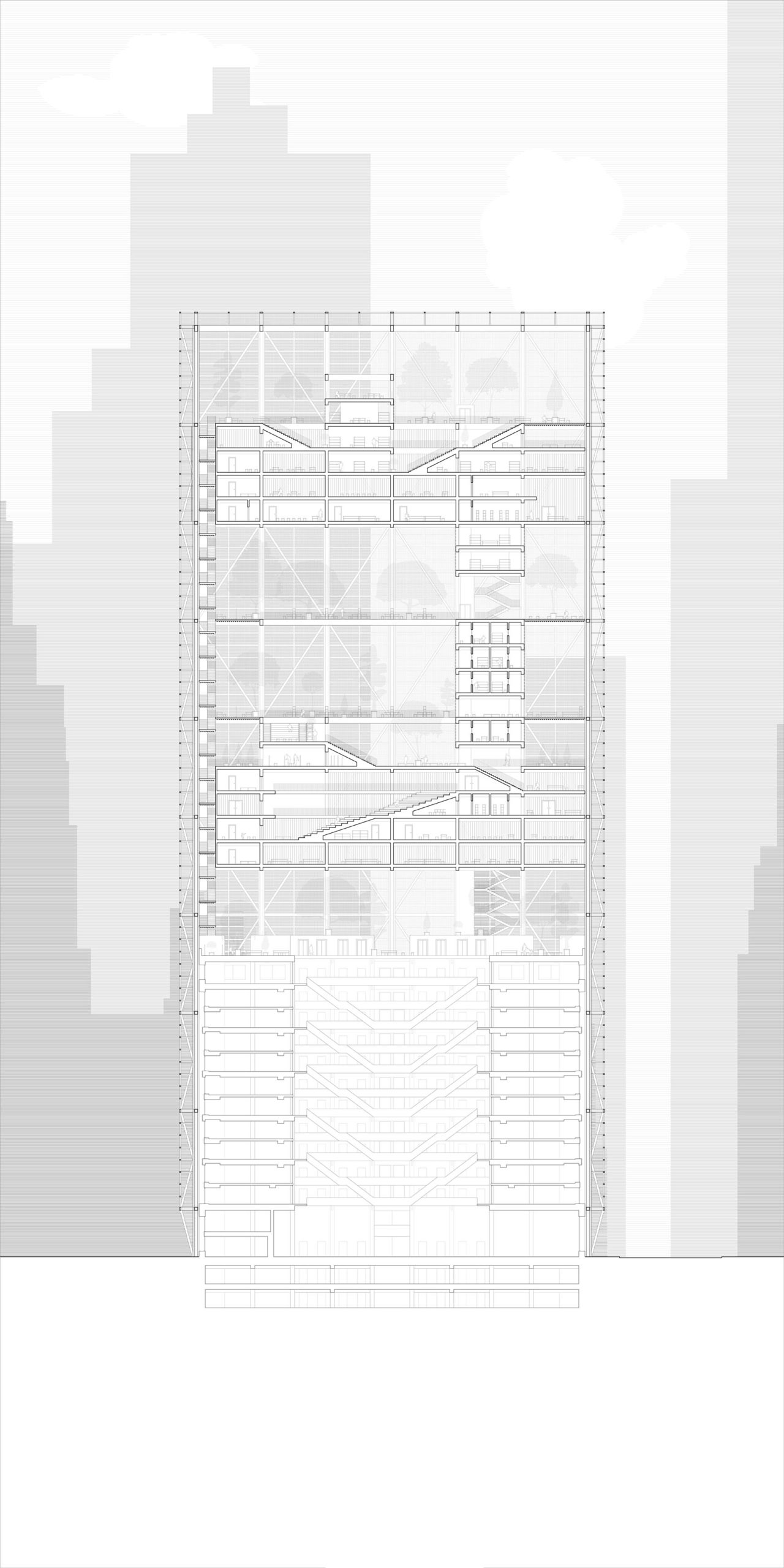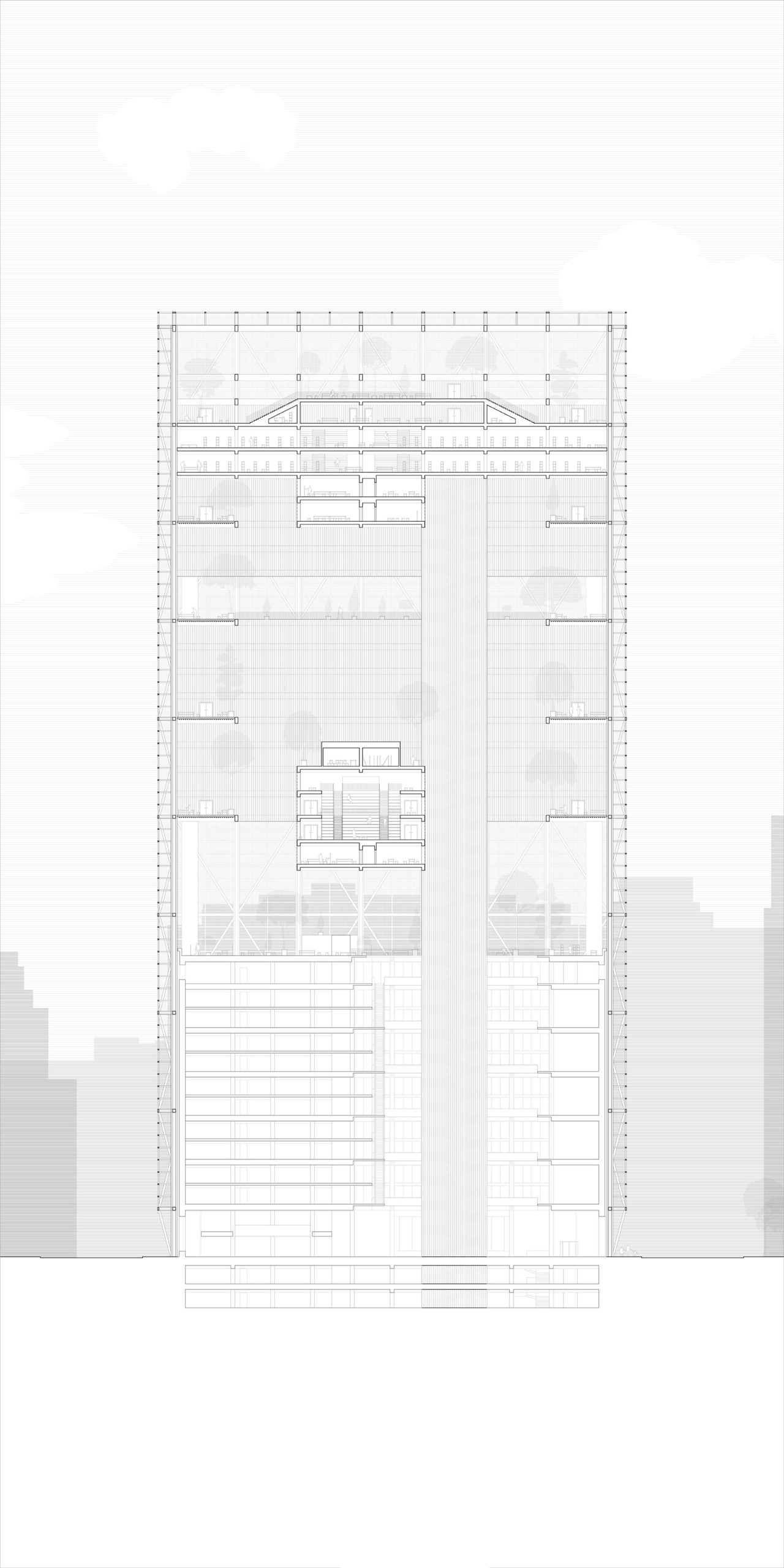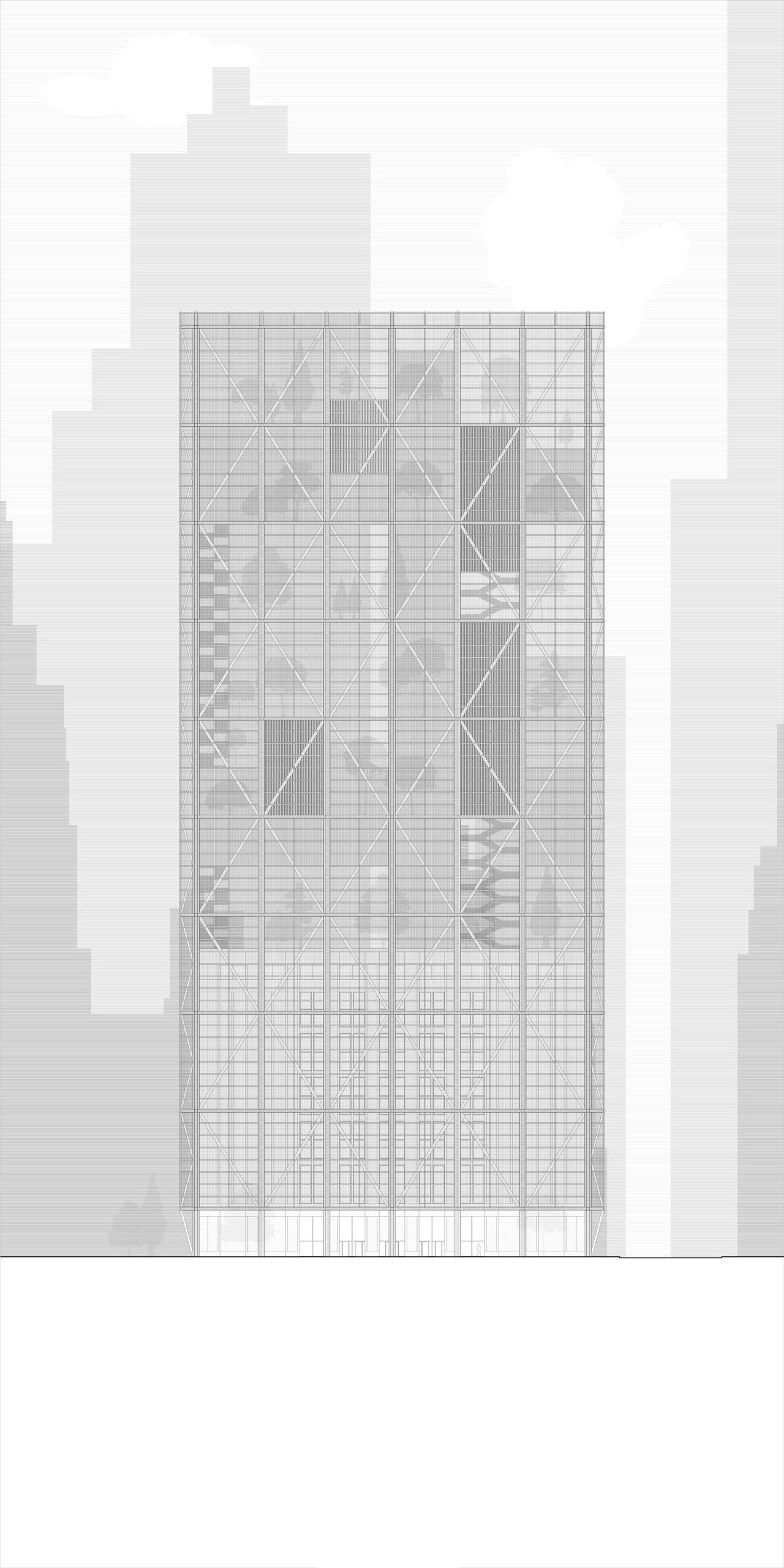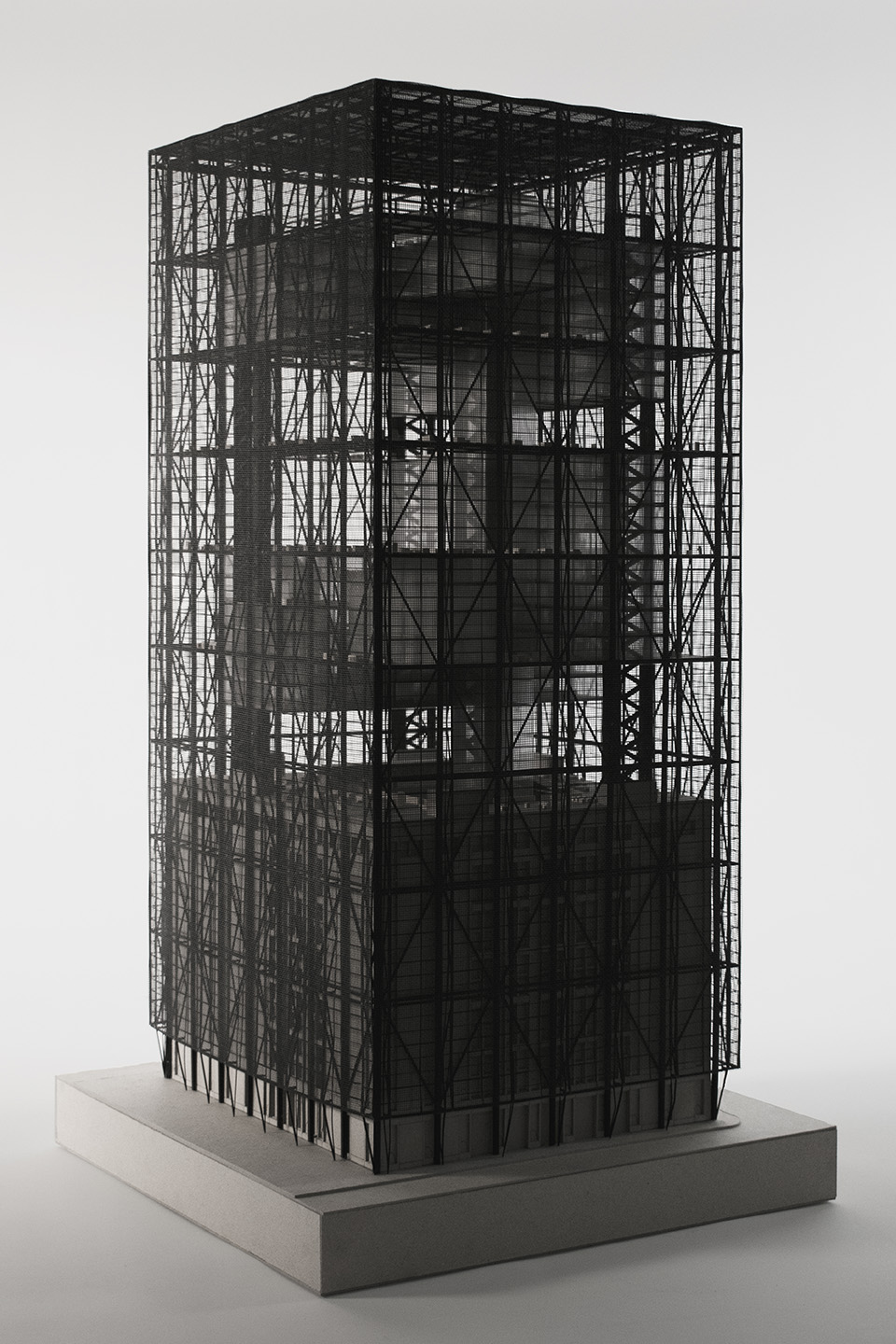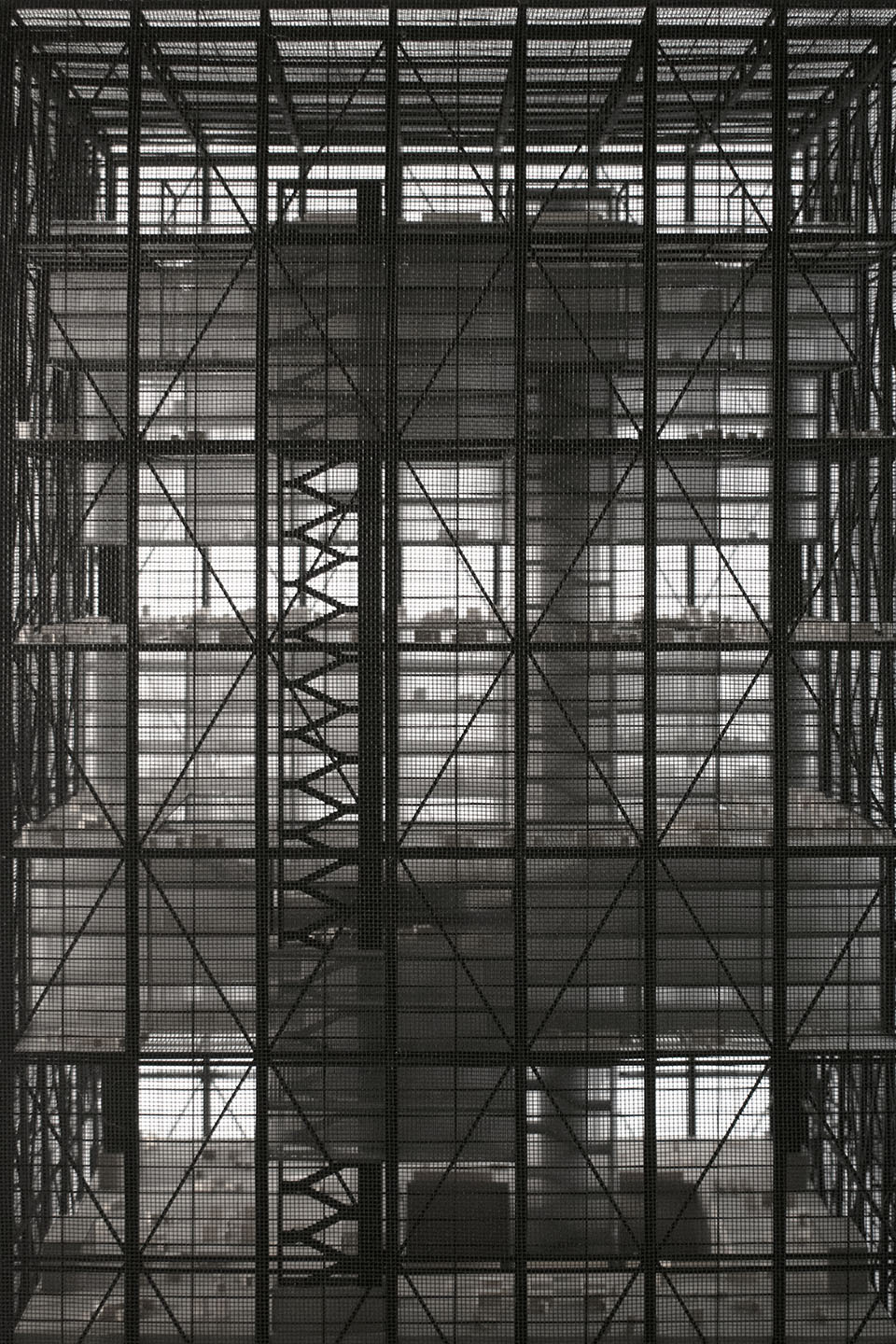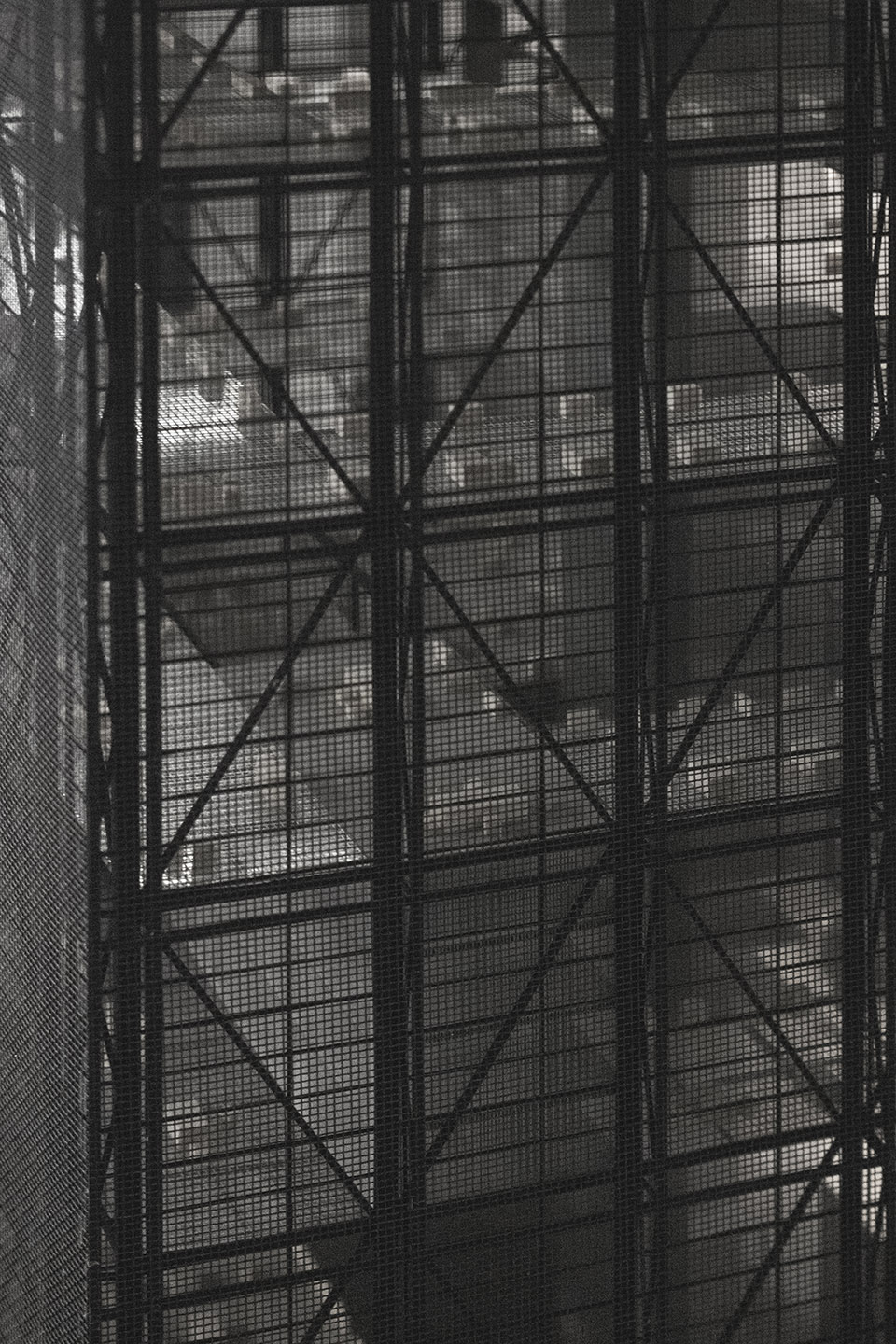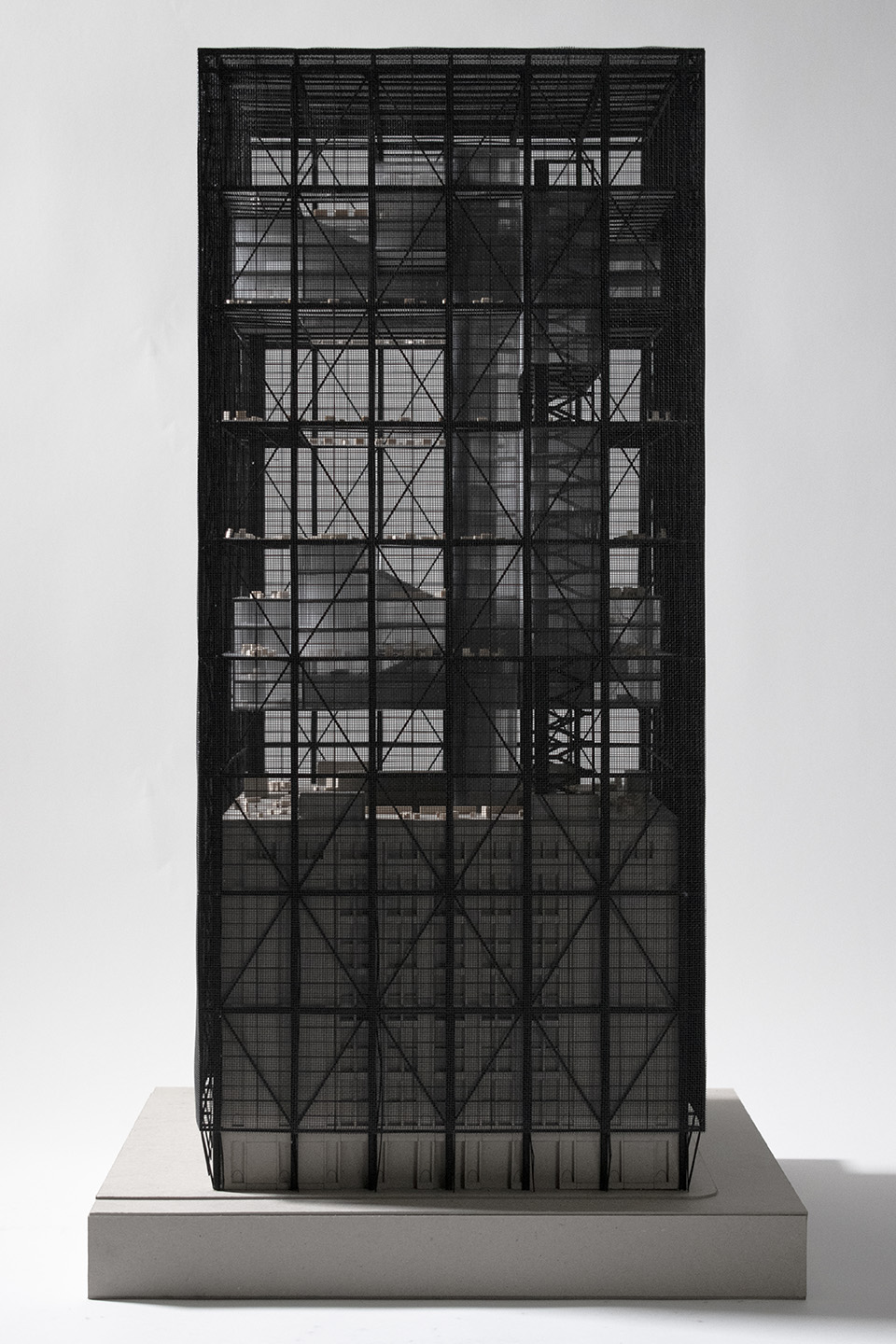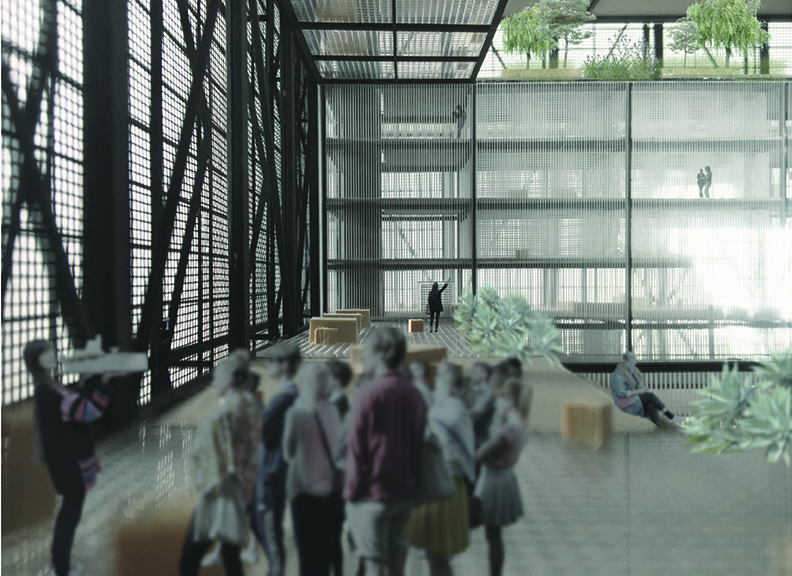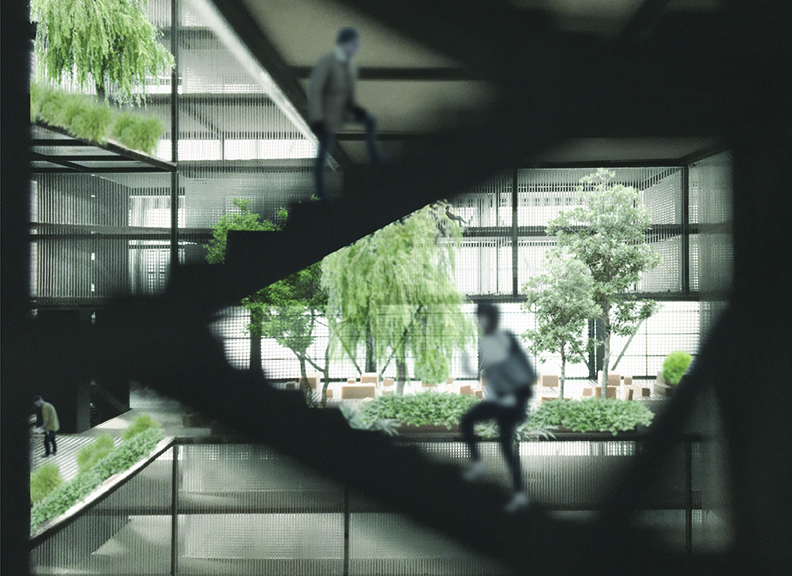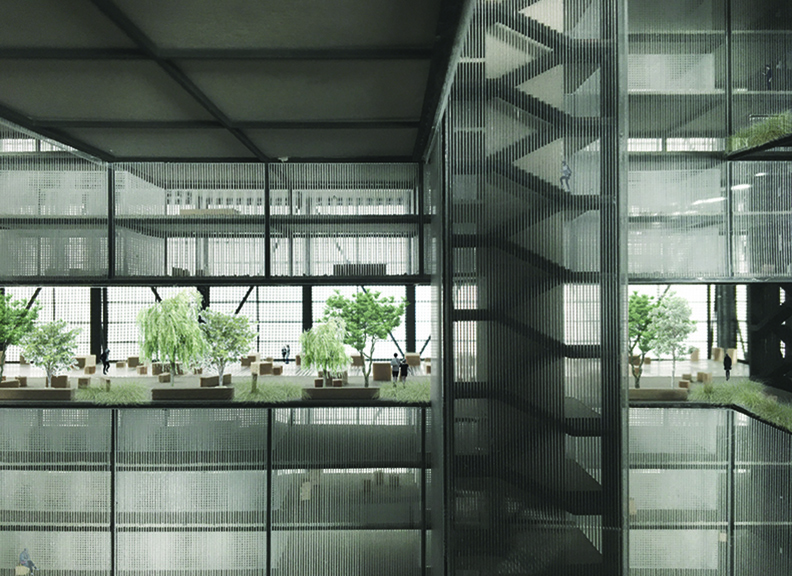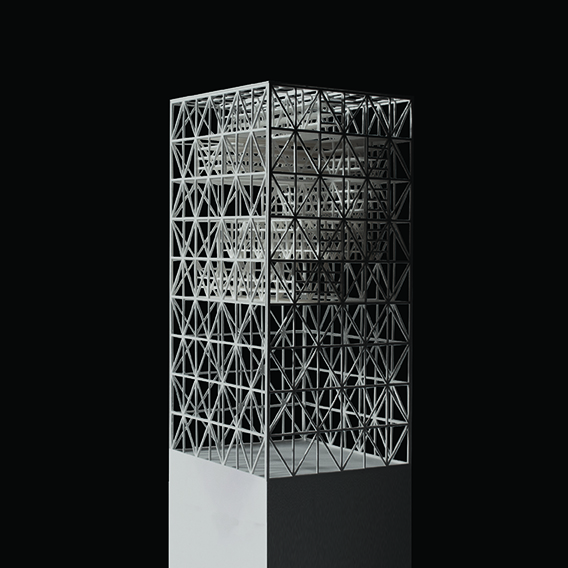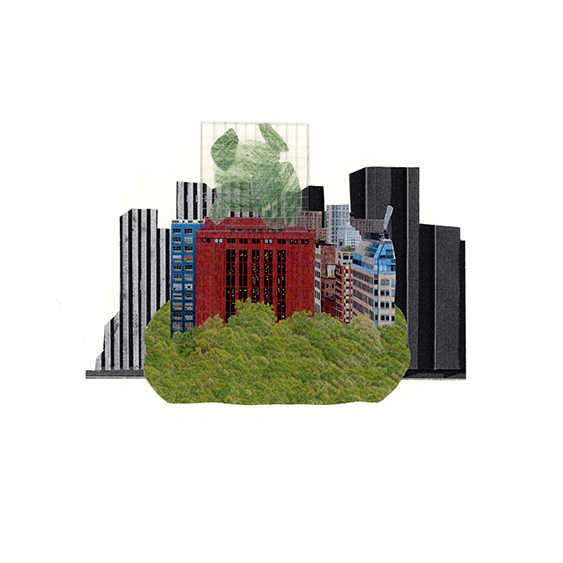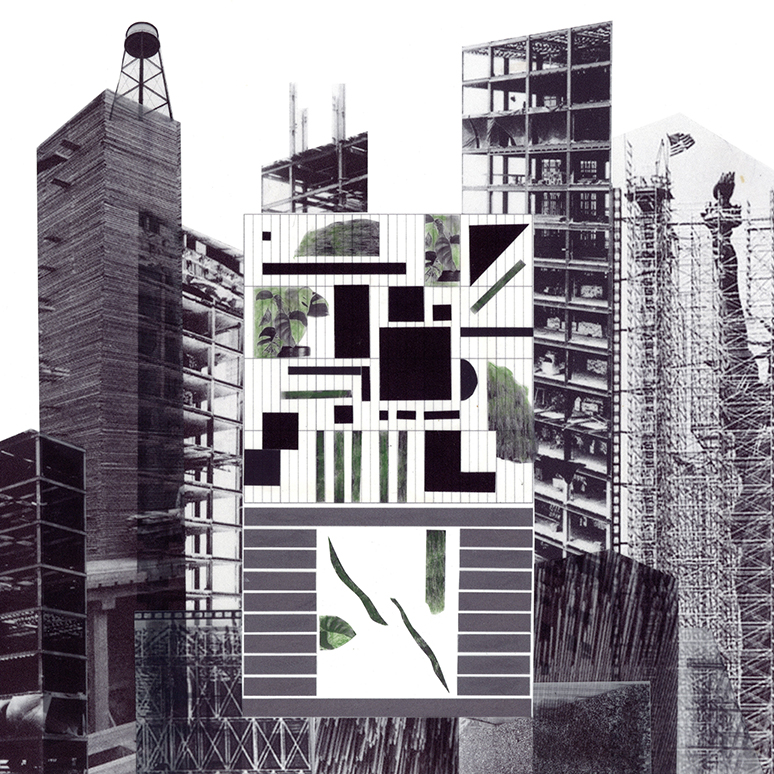Building on Bobst: A New Interior
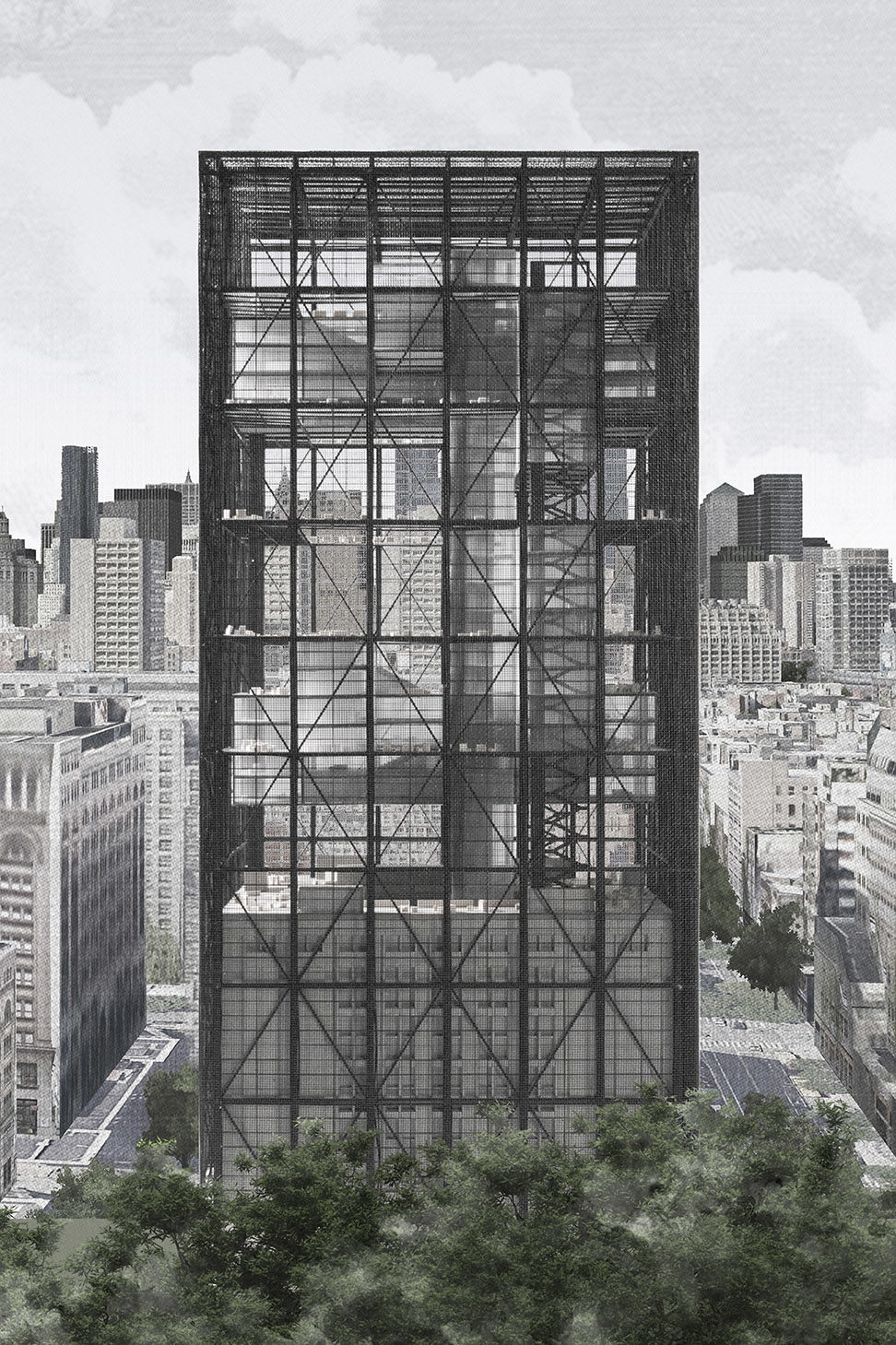
by Isaac Pollan (MArch I ’22)
Philip Johnson’s Elmer Holmes Bobst Library has been a landmark in Greenwich Village and NYU’s campus since its completion in 1973. The library marks the southeastern corner of Washington Square Park. This proposal incorporates a new school of design atop Bobst.
In its current state, Bobst is introverted; its stacks and reading rooms look upon a dark central atrium. In response, this project finds inspiration in the adjacent park. This proposal extroverts the atrium, creating rings of multi-height bright and airy greenspaces which accommodate studio desks for the school. At this scale, these new interiors seem more like loosely enclosed exteriors. These zones are contrasted against a supporting set of more densely-packed volumetric bars which host classrooms, faculty offices, fabrication spaces, etc.
The geometric purity of the overall massing pays homage to the paradigmatic towers of midtown. However, the monolithic nature of those projects is contrasted here with a more porous skin which allows light to pass through to the park and neighboring buildings. The goal was to build big and transparent rather than condensed but opaque. Additionally, the veil-like quality of the facade, which also enshrouds Bobst, nods to the unsavory past of the library. (The patron and architect were both Nazi sympathizers; also, multiple suicides have taken place within the building.)
The load of the proposed building is completely supported by its exo-skeletal structure. Bobst remains untouched except for the continuation of three circulation cores. The programmatic bars in this proposal function as a set of bridges which hang from opposing faces of the structural skin. One could imagine this strategy of autonomous additions playing out across the entire city, above a variety of sites. Rather than tearing down inadequate old buildings, we can float new ones on top of them. Supplemental facades can be draped around old structures as needed to create more environmentally friendly building envelopes.
